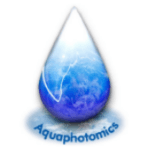The analysis of water was present in the field of the near infrared spectroscopy ever since its inception (Hirschfeld 1985, Grant, Davies, and Bilverstone 1989, Iwamoto, Uozumi, and Nishinari 1987, Maeda et al. 1995). These early works analyzed and utilized the properties of water spectra, but the idea of water as a molecular system and biological matrix was not yet considered. Water has been often described as the “greatest enemy” of infrared and near infrared spectroscopy on account of its dominant absorption. There are two reasons for this attitude. For a long time, in biological sciences the water was regarded as an inert medium. The living processes were described in the terms of genes, DNA, proteins, metabolites or other single biomolecules. Understandably, the research methods were focused on extracting the signals related to the structure of these biomolecules, and in the near infrared region, dominant absorbance of water was seen as an obstacle to observe their absorbance bands. However, the field of water science has seen a significant progress in the last decades which significantly changed the general opinion of water and its role in the living systems (Pollack, Cameron, and Wheatley 2006, Del Giudice, Spinetti, and Tedeschi 2010, Ball 2008b, a, Chaplin 2006). Water is now recognized as an active solvent, adapting its structure to the solutes that it accommodates, and in biological systems a kind of biomolecule in its own right with an active role in the dynamics of biomolecular and cellular processes (Ball 2008a, Tsenkova 2008, 2009, 2010).

Through extensive work in the field of various biomolecules-water interactions aquaphotomics provided insight into their dynamics and significant role the water plays in it. One of the first applications in this field was concerned with prion protein isoforms identification (Tsenkova et al. 2004). The binding of Manganese (Mn) instead of Copper (Cu) is thought to be one of the suggested mechanisms of converting the prion protein into a dysfunctional form. The aquaphotomics analysis of Mn and Cu isoforms in water solutions, revealed that Cu binding increases the protein stability in water, while binding Mn leads to instability and changes which promote fibril formation. Another study investigated formation of amyloid fibrils (Chatani et al. 2014). The study was done in parallel: the changes during fibrillation of insulin was monitored in 2050–2350 nm and 1300–1600 nm spectral regions. The results showed that entire process of the conformational changes of protein is reflected in the changes of water molecular matrix (Chatani et al. 2014).
Ball, P. 2008a. “Water as a biomolecule.” ChemPhysChem 9 (18):2677-2685.
Ball, P. 2008b. “Water as an active constituent in cell biology.” Chemical reviews 108 (1):74-108.
Chaplin, M. 2006. “Do we underestimate the importance of water in cell biology?” Nature Reviews Molecular Cell Biology 7 (11):861-866.
Chatani, E., Y. Tsuchisaka, Y. Masuda, and R. Tsenkova. 2014. “Water molecular system dynamics associated with amyloidogenic nucleation as revealed by real time near infrared spectroscopy and aquaphotomics.” PloS one 9 (7):e101997.
Del Giudice, E., P.R. Spinetti, and A. Tedeschi. 2010. “Water dynamics at the root of metamorphosis in living organisms.” Water 2 (3):566-586.
Grant, A., A.M.C. Davies, and T. Bilverstone. 1989. “Simultaneous determination of sodium hydroxide, sodium carbonate and sodium chloride concentrations in aqueous solutions by near-infrared spectrometry.” Analyst 114 (7):819-822.
Hirschfeld, Tomas. 1985. “Salinity determination using NIRA.” Applied spectroscopy 39 (4):740-741. doi: 10.1366/0003702854250293.
Iwamoto, M., J. Uozumi, and K. Nishinari. 1987. “Preliminary investigation of the state of water in foods by near infrared spectroscopy.” Proceedings of the International NIR/NIT Conference, Budapest, Hungary.
Maeda, H., Y. Ozaki, M. Tanaka, N. Hayashi, and T. Kojima. 1995. “Near infrared spectroscopy and chemometrics studies of temperature-dependent spectral variations of water: relationship between spectral changes and hydrogen bonds.” Journal of Near Infrared Spectroscopy 3 (4):191-201. doi: 10.1255/jnirs.69.
Pollack, G.H., I.L. Cameron, and D.N. Wheatley, eds. 2006. Water and the cell. Dordrecht, Netherlands: Springer.
Tsenkova, R. 2008. “Aquaphotomics: acquiring spectra of various biological fluids of the same organism reveals the importance of water matrix absorbance coordinates and the aquaphotome for understanding biological phenomena.” NIR news 19 (1):13-15.
Tsenkova, R. 2009. “Aquaphotomics: dynamic spectroscopy of aqueous and biological systems describes peculiarities of water.” Journal of Near Infrared Spectroscopy 17 (6):303-313. doi: 10.1255/jnirs.869.
Tsenkova, R. 2010. “Aquaphotomics: water in the biological and aqueous world scrutinised with invisible light.” Spectroscopy Europe 22 (6):6-10.
Tsenkova, R.N., I.K. Iordanova, K. Toyoda, and D.R. Brown. 2004. “Prion protein fate governed by metal binding.” Biochemical and biophysical research communications 325 (3):1005-1012. doi: 10.1016/j.bbrc.2004.10.135.
